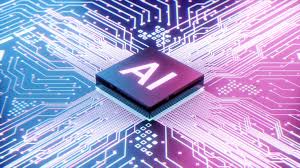
Wondering about er tech? It’s all about enhancing efficiency. Picture this: seamless processes, optimized workflows. Imagine er tech as your ultimate productivity booster. Dive in to explore how er tech revolutionizes operations, fuels growth. Whether you’re a beginner or seasoned pro, er tech has something for everyone. Ready to embrace the future of tech? Let’s delve into the exciting realm of er tech together.
Exploring the Exciting World of ER Tech
In the fast-paced environment of emergency rooms across the globe, technology plays a crucial role in enhancing patient care, improving efficiency, and ultimately saving lives. Let’s delve into the fascinating realm of ER tech to understand the innovative solutions and advancements that are revolutionizing emergency medical services.
The Evolution of ER Technology
Emergency room technology has come a long way over the years, transforming the way healthcare professionals diagnose and treat patients in critical situations. Here are some key aspects of the evolution of ER tech:
– **Electronic Health Records (EHR):** The transition from paper-based record-keeping to electronic health records has significantly improved information accessibility and patient care coordination in emergency departments.
– **Telemedicine:** The integration of telemedicine technologies allows ER physicians to consult with specialists remotely, enabling timely diagnosis and treatment decisions for patients in rural or underserved areas.
– **Diagnostic Imaging:** Advanced imaging technologies such as CT scans, MRIs, and ultrasound machines provide detailed insights into patients’ conditions, facilitating accurate diagnoses and treatment planning.
– **Point-of-Care Testing:** Rapid point-of-care testing devices enable quick assessment of vital parameters such as blood glucose levels, cardiac biomarkers, and infectious diseases, expediting treatment decisions in the ER.
Key Technologies Driving Efficiency in the ER
In the dynamic environment of the emergency room, technology plays a pivotal role in streamlining processes, reducing wait times, and enhancing overall efficiency. Let’s explore some of the key technologies that are transforming emergency medical services:
– **Real-time Location Systems (RTLS):** RTLS technologies leverage RFID tags or sensors to track the location of equipment, patients, and staff in the ER, optimizing resource allocation and improving response times during emergencies.
– **Patient Flow Management Systems:** These sophisticated systems use algorithms to predict patient flow, identify bottlenecks, and allocate resources effectively, ensuring a smooth and efficient experience for both patients and healthcare providers.
– **Teletracking Solutions:** Teletracking platforms enable real-time monitoring of ER operations, including bed availability, patient status, and staff allocation, helping streamline workflows and improve patient outcomes.
– **Robotics and Automation:** Utilizing robots for tasks such as medication delivery, sample collection, and even minor surgical procedures can enhance efficiency, reduce human error, and free up healthcare professionals to focus on critical care tasks.
Enhancing Patient Care Through Technological Innovations
The integration of cutting-edge technologies in emergency medical services has revolutionized patient care delivery, leading to improved outcomes and enhanced quality of care. Here are some ways in which ER tech innovations are transforming patient care:
– **Remote Monitoring Devices:** Wearable devices and remote monitoring technologies allow healthcare providers to track patients’ vital signs and health metrics in real time, enabling early detection of complications and proactive interventions.
– **Predictive Analytics:** Advanced analytics tools can analyze vast amounts of data to predict patient outcomes, identify at-risk individuals, and optimize treatment plans, enhancing clinical decision-making and resource utilization in the ER.
– **Augmented Reality (AR) and Virtual Reality (VR):** AR and VR technologies are being used in emergency medicine for training purposes, simulation exercises, and even preoperative planning, providing healthcare professionals with immersive learning experiences and enhancing diagnostic skills.
– **Smart Triage Systems:** AI-powered triage systems can prioritize patient cases based on severity, acuity, and resource availability, ensuring that critical cases receive prompt attention and optimizing overall ER operations.
Challenges and Future Trends in ER Technology
While the integration of technology in emergency rooms has brought about significant benefits, it also presents unique challenges and considerations. Let’s explore some of the key challenges facing ER tech implementation and look at future trends in the field:
– **Interoperability Issues:** Ensuring seamless integration and data sharing among different ER systems, EHR platforms, and medical devices remains a challenge, requiring standardized protocols and effective communication channels.
– **Cybersecurity Risks:** With the increasing digitization of healthcare data and the interconnected nature of ER systems, cybersecurity threats such as data breaches, ransomware attacks, and unauthorized access pose significant risks to patient privacy and data integrity.
– **Artificial Intelligence (AI) Integration:** The incorporation of AI algorithms in clinical decision support tools, predictive analytics models, and imaging interpretation software holds great promise for enhancing ER care but also raises ethical and regulatory concerns regarding algorithm transparency and accountability.
– **Telehealth Expansion:** The widespread adoption of telehealth services in emergency medicine, especially in response to the COVID-19 pandemic, is expected to continue growing, presenting opportunities for remote patient monitoring, teletriage, and virtual consultations in the ER setting.
As emergency rooms continue to leverage the power of technology to improve patient outcomes and enhance operational efficiency, it is essential for healthcare providers, IT professionals, and policymakers to collaborate effectively, address challenges proactively, and embrace innovative solutions to shape the future of emergency medical services.
DAY IN MY LIFE ER TECH \ EMERGENCY ROOM TECHNICIAN + DAILY VLOG
Frequently Asked Questions
What are the primary responsibilities of an ER tech?
ER techs assist healthcare providers in emergency rooms by performing tasks such as taking vital signs, documenting patient information, and assisting with procedures to ensure efficient and timely patient care.
Is certification required to work as an ER tech?
While certification is not always mandatory, many employers prefer to hire ER techs who are certified through programs such as Emergency Medical Technician (EMT) certification or Certified Nursing Assistant (CNA) certification.
What skills are essential for someone pursuing a career as an ER tech?
Critical thinking, strong communication skills, the ability to work well under pressure, and proficiency in basic medical procedures are vital for success as an ER tech.
How do ER techs contribute to the overall functioning of an emergency room?
ER techs play a crucial role in ensuring that emergency rooms operate smoothly by assisting with patient care, maintaining supplies, and supporting medical staff in delivering prompt and effective treatment to patients in need.
What are some common challenges that ER techs may face in their roles?
ER techs often encounter high-stress environments, unpredictable situations, and the need to quickly adapt to changing circumstances, which can present challenges but also offer opportunities for growth and skill development in emergency medical settings.
Final Thoughts
In conclusion, embracing er tech is vital for modern businesses’ success. Implementing er tech solutions enhances efficiency and productivity. Additionally, er tech streamlines processes and improves decision-making. By integrating er tech effectively, organizations can stay competitive and adapt to market changes swiftly. Leveraging er tech maximizes operational effectiveness and drives sustainable growth. Adopting er tech is no longer an option but a necessity in today’s dynamic business landscape.



